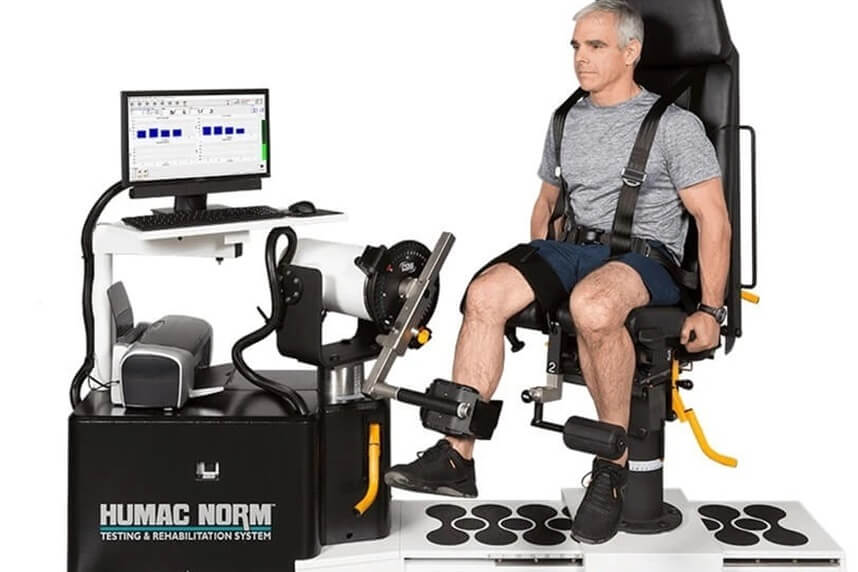Why are balance and muscle symmetry important for football players?

This study analyzes the link between muscle strength imbalances in the legs and injury risk among professional football players. Researchers aimed to find out if power differences between the dominant leg (most frequently used) and the non-dominant leg (less frequently used) can increase the risk of non-contact injuries (injuries not caused by a collision with another player).
To measure these strength differences, researchers used a special device called the Cybex Humac Norm dynamometer. This device is used to assess the isokinetic strength of muscles, meaning the power and resistance of muscles in motion. It is important to note that the Cybex Humac Norm dynamometer is available at Centrokinetic clinics, where patients can benefit from similar tests to evaluate and correct muscle imbalances.
Benefits of the Cybex Humac Norm dynamometer:
- Accurate evaluation: Provides precise measurements of muscle strength, helping to identify imbalances between different muscle groups.
- Personalized recovery recommendations: Based on the obtained results, therapists can create customized recovery and training programs to correct imbalances.
- Progress monitoring: Allows for continuous monitoring of patients' progress during recovery or training programs.
- Injury prevention: Identifying imbalances and weak areas in muscle structure helps reduce injury risk through preventive interventions.
What did the researchers find?
The study involved 227 football players from the first league in the Czech Republic, and the results were clear: players with strength imbalances between legs (greater than 10%) had a higher risk of injury during the season. For example, 65.9% of players who sustained non-contact leg injuries had a strength imbalance between the extensor muscles of the knee (those that help straighten the knee). Additionally, 67.9% of those with asymmetries in the knee flexor muscles (those that help bend the knee) were more prone to injuries.
Why are these imbalances risky?
Football involves quick movements and sudden changes in direction, which puts a lot of pressure on the muscles and joints of the legs. Players tend to use one leg more frequently (usually the dominant leg), which can lead to the development of an imbalance between the two legs. These imbalances increase the risk of injuries, especially to the knees and hamstring muscles. If one leg is stronger than the other, muscles and joints are subjected to uneven stress, which can lead to injuries.
Which muscles are most at risk of injury?
Among the most common injuries for football players are injuries to the hamstring muscles, adductors (muscles that help bring the legs together), quadriceps (the large muscle in the front of the thigh), and calf muscles. Additionally, the anterior cruciate ligament (ACL) of the knee is very vulnerable, and muscle imbalances can increase the risk of stretching or tearing this ligament.
How could preventing imbalances help?
Training that improves the strength of both legs, reducing strength differences between them, can help decrease the risk of injuries. If both legs have similar strength, the body is better balanced and can better handle the rapid movements and directional changes specific to football. This can contribute to a safer and more effective athletic performance.
Conclusions and future directions
This study suggests that coaches and physical trainers should pay attention to the strength balance between the legs, especially during the pre-season preparation period. Correcting these imbalances through specific training, as done at Centrokinetic with the help of the Humac Norm dynamometer, can reduce the risk of injuries and contribute to the long-term health of players. Future studies could explore other causes of muscle imbalances and customized solutions for preventing injuries in football players.
BUCHAREST TEAM
CLUJ NAPOCA TEAM
BRASOV TEAM
MAKE AN APPOINTMENT
FOR AN EXAMINATION
See here how you can make an appointment and the location of our clinics.
MAKE AN APPOINTMENT

































































































































